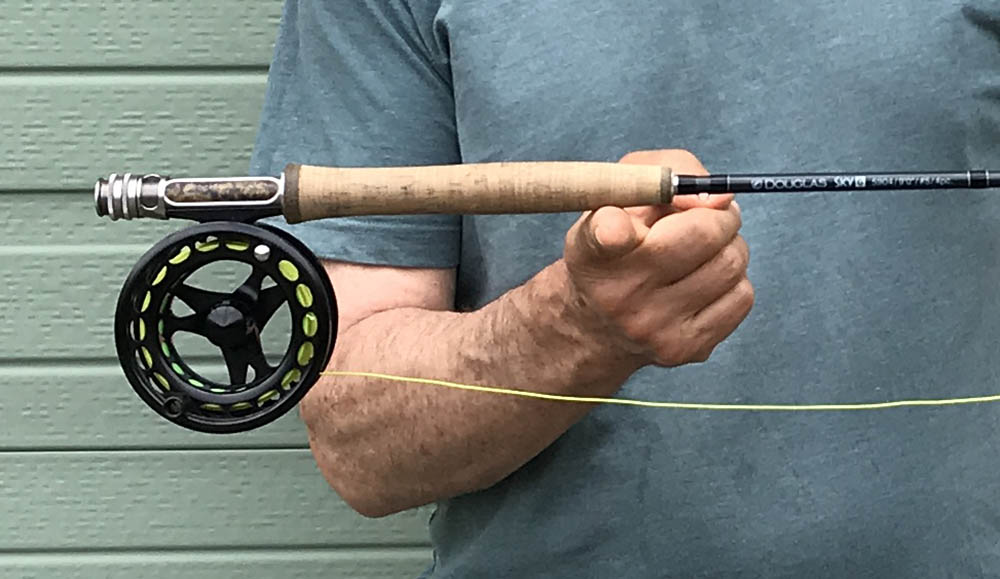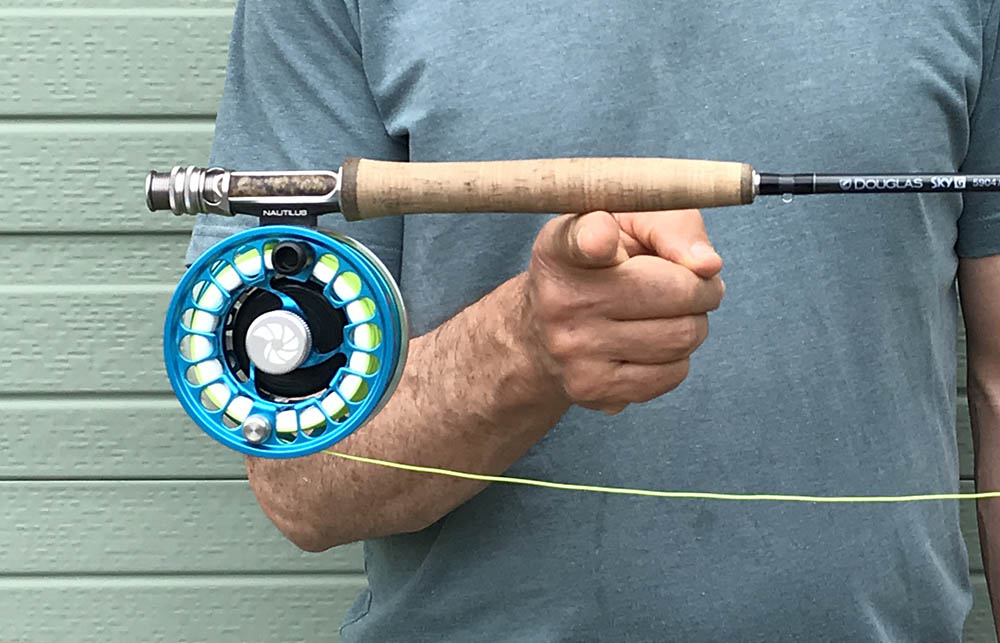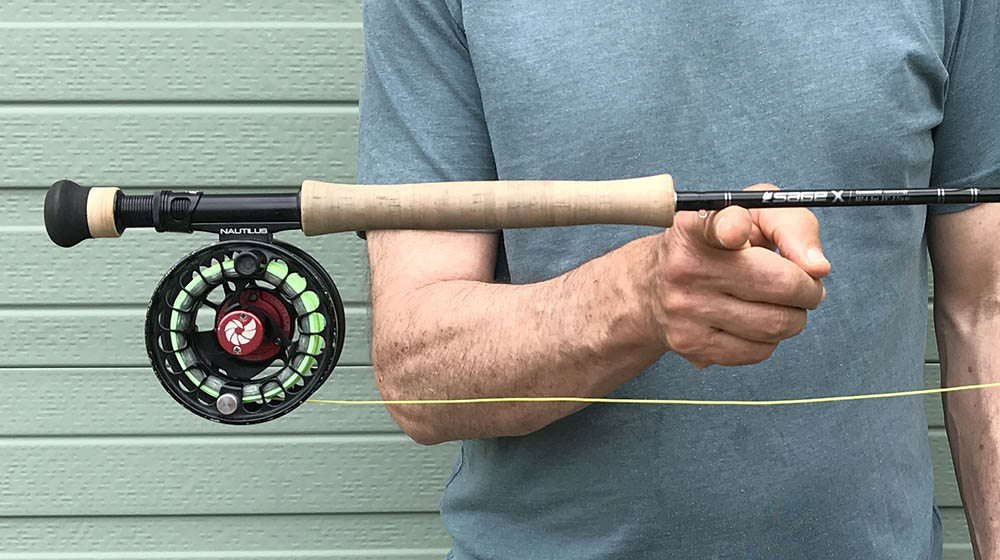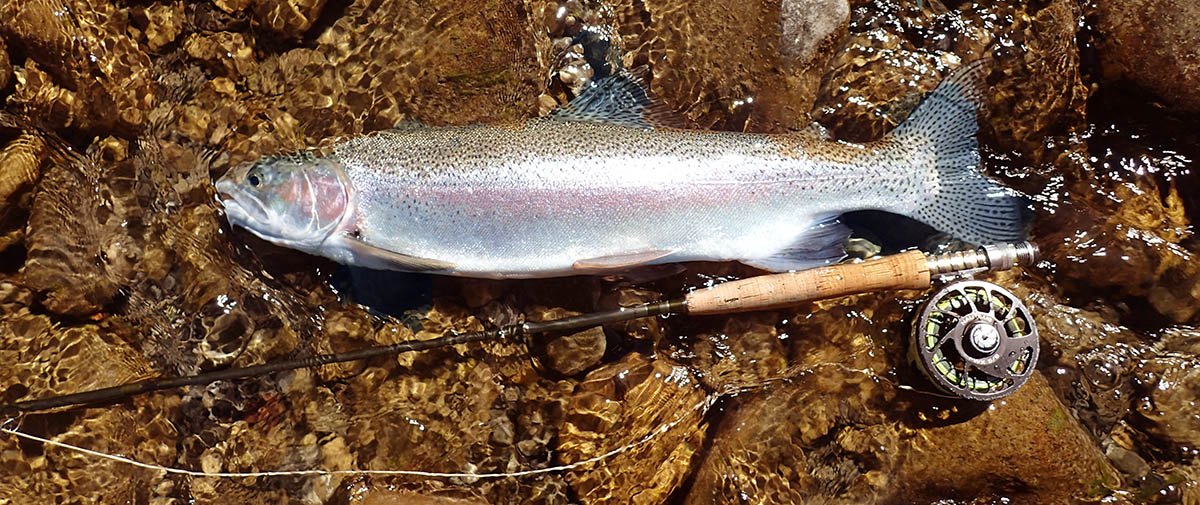How to balance single hand fly rods with reel weight
For more than four decades I bought into the marketing hype that the lightest fly reels were best. When I acquired a new state-of-the-art ultra light 5wt single hand rod in 2022 I naturally thought it would benefit from a lighter reel. Agonising over the options got me thinking about ‘rod balance’.
A deep dive into the internet produced some competing theories on rod balance, which I’ve summarised:
| 1. | Balance doesn’t matter, so choose the lightest reel available (the most common opinion). |
| 2. | Rod should balance one to two inches (2.5 to 5cm) in front of the cork. |
| 3. | Rod should balance one to three inches (2.5 to 7.6 cm) back from the front of the cork. |
| 4. | Rod should balance where thumb and forefinger touch cork when casting. |
| 5. | Rod should balance under the trigger finger - usually the index finger. |
| 6. | Rod should balance under the middle finger. |
| 7. | Rod should balance in the centre of the cork grip. |
| 8. | Balance is more important for holding the rod when carrying or fishing than for casting. |
Given the lack of consistency in opinions, I decided a casting experiment was in order using two of my 5wt rods - a 9 ft Douglas Sky G and a 9.5 ft Sage X - and different reels of increasing weight.
Before casting each outfit, I tested the balance point in terms of its distance from the front end of the cork grip - bearing in mind that the length of the grip on the two test rods was identical.
I also tested the balance point in relation to the positions of the index finger and the thumb on my right hand when gripping the rod for casting - in this case my thumb was on top and my index finger below the cork.
Balance points were determined with about 30 feet of line out of the rod tip.
The table below contains vital statistics and balance points (BP), measured as distance from the front of the cork grip, for the four reels used in the test. The Nautilus FWX has a balance point of minus 3.2 cm on the Sage X rod, because the balance point was 3.2 cm in front of the grip. Balance point was determined with 30 feet of fly line outside of the rod tip.
| Fly Reel | Reel Wt (oz) |
Weight with line |
9 ft Sky G BP (cm) |
9.5ft Sage X BP (cm) |
| Nautilus FWX 5/6 | 4.5 | 5.7 | 1.3 | -3.2 |
| Danielsson F3W 4/7 | 5.2 | 6.6 | 3 | 0.5 |
| Lamson Velocity 3.5 | 5.9 | 7.5 | 4.5 | 1.7 |
| Nautilus NV G 7/8 | 7.9 | 9.35 | 7.7 | 4.7 |
Starting with the Douglas Sky G rod, the Nautilus FWX balanced the rod at 1.3 cm, and the Danielsson F3W reels balanced the rod 3 cm from the front of the cork.
The Lamson Velocity reel balanced the rod 4.5 cm and the Nautilus NV-G reel balanced the rod 7.7 cm from the front of the cork.
Using my grip as a reference, the balance point for the Danielsson was immediately in front of my forefinger and in the centre of my thumb print. The balance point for the Nautilus NV-G reel was in line with my middle finger.

Ideal balance point - Douglas Sky G and Danielsson F3W 4seven

Reel much too heavy - Douglas Sky G and Nautilus NV-G
When it came to casting, the Sky G rod felt lightest with the Nautilus FWX reel, but I was more accurate and had better loop control with the slightly heavier Danielsson F3W reel. I was not expecting this result - and went back and forth a couple of times to validate this.
The additional reel weight produced a greater ‘keeling’ effect, which meant that the rod tracked straighter on the foreword cast. This was especially noticeable on the final delivery of long casts, when I tended to roll my wrist with the lighter reel, producing a wayward tail.
With the heavier Lamson Velocity reel and heavy Nautilus NV-G reel the keeling affect was further exaggerated, but the outfit began to feel overly heavy with an increasing loss of feel and sensitivity. The outfit also felt sluggish as the excessive reel weight created noticeable inertia.
On the 9.5 ft Sage X rod, the Nautilus FWX reel balanced the rod at 3.2 cm in front of the cork, just ahead of the hook keeper.
When casting this outfit, the rod felt slow and heavy with a much higher swing weight than with heavier reels, e.g. the Lamson Velocity. The rod felt okay with the Danielsson F3W reel, but a lot better with the one ounce heavier Lamson Velocity reel. The heavier Nautilus NV-G made the rod feel heavy and sluggish.

Reel much too light - 9.5 ft Sage X and Nautilus FWX.
The 9.5ft Sage X felt tip heavy with a horrible swing weight with a reel that is too light.
Conclusions
This experiment taught me that reel weight does have a significant impact on the overhead casting performance of 9 and 9.5 ft single hand fly rods, and the lightest reel available may not be the best option for me. Reels that were too light resulted in a higher swing weight and produced tails on long casts.
Reels that were too heavy also spoiled rod performance as they produced an outfit that was overly heavy and sluggish.
My Nautilus FWX has been an old standby 5wt trout reel for many years. Had I not done this experiment I would never have known I was sacrificing some casting ability and fishing pleasure with the rods I‘ve used it on. Now that I’ve experienced the benefits of a well balanced rod it’s impossible to return to my previous ignorance - which is no longer bliss.
What works best for me is a reel that balances the rod at around 1.7 to 3 cm back from the front of the cork, with 30 feet of line out through the guides.
As grip length on single hand rods can vary by as much as 1 cm, determining the optimal balance point by using your finger’s position when gripping the rod for casting, is more reliable than measuring the distance from the front of the cork.
In my case, the ideal balance point is just in front of my index finger and in line with the centre of my thumb print on top of the cork.
It’s important to note that my experiments were done with 30 feet of fly line out through the rod tip, and that with all of the line on the reel, and no weight in the guides, the balance points were more toward the rear of the grip.
The ideal total reel weight with backing and fly line was 6 - 6.5 ounces for a modern 9 ft 5wt graphite rod, and 7 - 7.5 ounces for a 9.5 ft 5wt. Without fly line and 100m of 50 lb braid backing, the ideal reel weights were 4.8 - 5.2 and 5.5 - 6.0 ounces, respectively.
Although the optimum reel weights in my experiment were determined according to overhead casting performance, a balanced rod is also an advantage in fishing situations when keeping the rod tip up, e.g. high sticking or fishing soft hackles, as you don’t need to fight a heavy tip.
My findings come with the following caveats:
| • | The rods used in my test are very light by industry standards, and heavier rods of equivalent length would require heavier reels to balance them. |
| • | Rods that are shorter and longer than those used in my tests would require lighter and heavier reels, respectively. |
| • | These results are based on my personal preference and casting style. |
Given the above caveats, the best way to determine the ideal reel weight for your single-hand rod, regardless of AFTMA rating, is to do your own experiment similar to the one I described above.
Happy balancing!
See other reviews :
